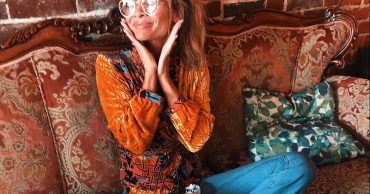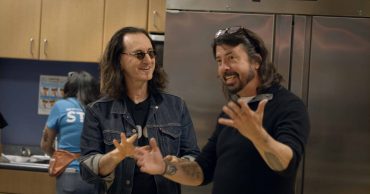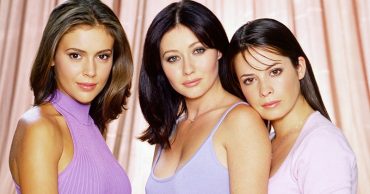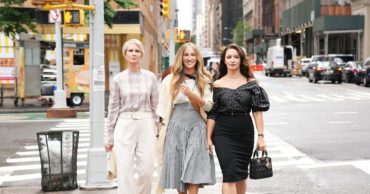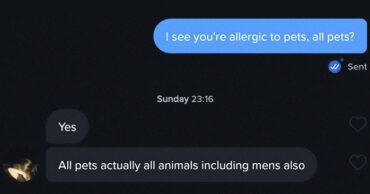“Voices of the Herd: Portraits of Rescued Cows and Their Sanctuary Stories” presents a decade-long photographic exploration of rescued cows, capturing their individuality, emotions and social bonds. Photographer Mark Peters immersed himself in farmed animal sanctuaries, patiently earning the trust of each cow to document moments of curiosity, playfulness, affection, and protective care.
The fine art portraits are complemented by heartfelt stories from sanctuary staff, revealing the resilience, personalities, and relationships of these often-overlooked sentient beings.
Through his lens, Peters invites viewers to see cows not as commodities, but as emotionally complex, intelligent animals whose lives and bonds are worthy of recognition and respect.
“Voices of the Herd” is published by Lantern Publishing & Media and is available through online book stores.
More info: lanternpm.org | markpetersphotography.com | Instagram
Juliet (Jersey)
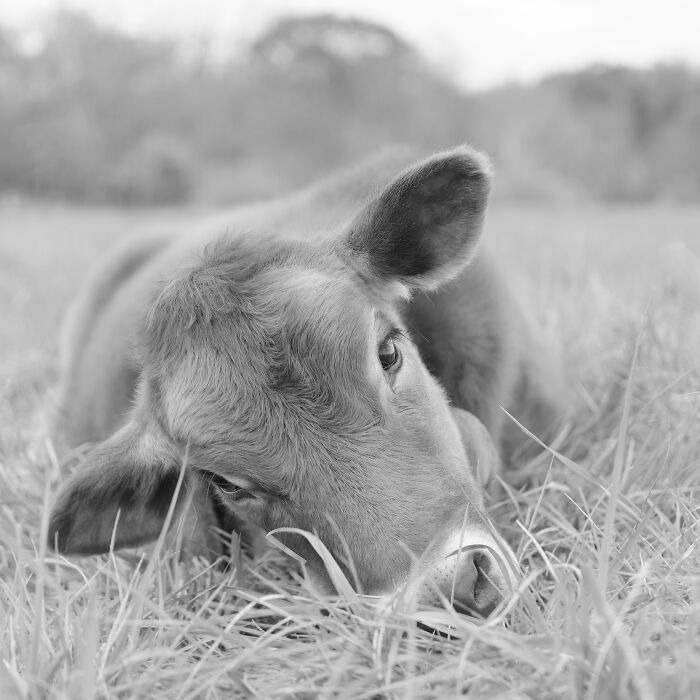
Rescued from a backyard farm, Juliet and her friend Clifford had been chained to a tree with no shelter.
Seeds of the book project
It’s often difficult to identify the specific seeds of an idea, yet surely one of them was my first personal encounter with a cow.
My wife and I were sharing a weekend at Farm Sanctuary in Watkins Glen, NY. A tour guide led us to the cow pasture. A young steer named Alexander came straight toward us and proceeded to wrap his body around me in a hug. He licked my chest like an affectionate dog—just one who would take up the whole couch (and then some)!
Mikey (Holstein) and Clifford (Holstein)
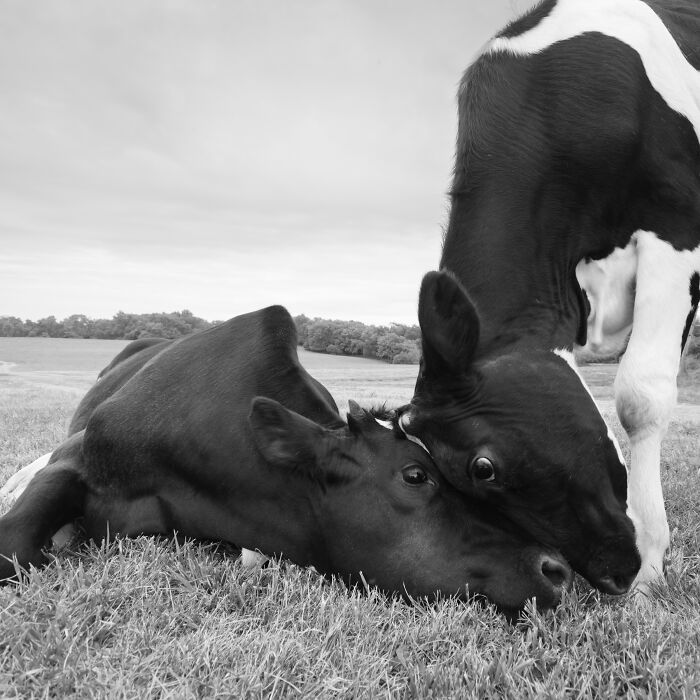
As a calf living in a petting zoo, Mikey was destined for slaughter at the season’s end. But when he injured his back, the worker who cared for him couldn’t let him go—and bought his freedom instead.
Pepper (British White)
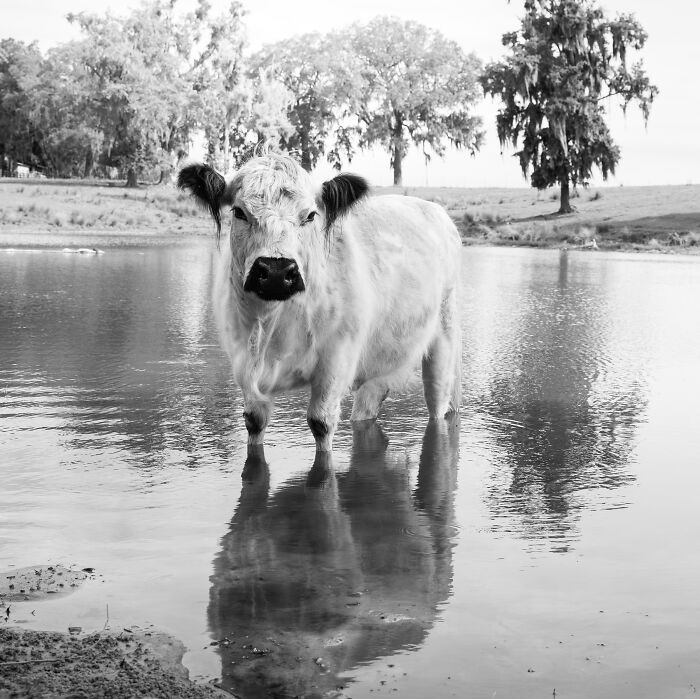
Pepper endured repeated forced impregnation, with each of her calves taken for slaughter. When the farm was sold, Pepper and her last calf, Truffles, finally found sanctuary side by side.
Immersing in the Herd
When I first visit a herd, it begins with a gentle meet-and-greet. Some cows take time to feel at ease with a stranger, so I walk among them slowly, allowing them to settle into my presence and introducing myself as I would to new friends.
When a moment unfolds—an emotion flickers across a face, or a bond is expressed between companions—I raise my camera.
Always from eye level or below, so the perspective honors them. My aim is simple: to reveal their individuality, dignity, and quiet presence, and to invite the viewer into the shared space where these beings first welcomed me.
Meeting the Animals
Have you ever stood in front of a cow and looked them in the eyes? They have this huge presence. They’re one of the largest land animals you can approach safely (well, mostly).
They’re complex. They can be excitable, playful, affectionate and endlessly curious. I’ve lost count of the times I’ve set down my camera bag, only to watch a cow mosey over, sniff it, and sometimes push it around like a ball. One of these days, I’ll need to send my lenses to Canon for repairs and will write on the form: destroyed by cows.
Edison (Holstein)

When Edison and his best friend Eddie were rescued, they had been neglected and were starving. Their bodies were thin and burned from lying in waste.
Petey (Brown Swiss)

Abandoned, Petey was rescued and given a second chance at life.
Emotional Intelligence and Social Bonds
Think about gorillas, elephants, dolphins and other species we admire. You might think: I could accept that they have best friends, that the mothers protect their babies—even that they care for weak members of their group and grieve over lost loved ones. But cows show all of these traits, too. Anecdotal evidence abounds! They just haven’t been given the same level of attention.
In one sanctuary, a blind calf kept pace with her herd only because other cows circled back and nudged her in the right direction whenever she faltered.
I’ve seen cow mothers act like “helicopter parents,” hovering over their precious calf and returning again and again to check on them when they forage.
Cows communicate with vocalizations, body language, and facial expressions. Their ears, tails, and even the whites of their eyes tell you how they feel—relaxed, alert, or stressed. They are social, intelligent, emotionally rich animals.
Gretchen & Nova (Longhorns)

Gretchen came from a cattle ranch. Nova was rescued from an extreme cruelty case. When animals live and love freely, they can find comfort in each other.
Vincent van Moo (Hereford)
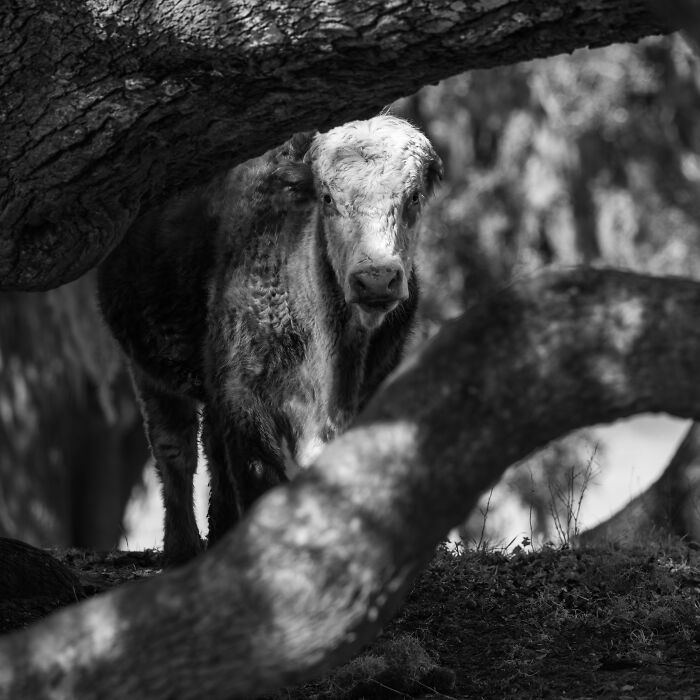
Mauled by dogs as a calf, Vincent lost one ear and nearly the other. His resilience is matched only by the tenderness he inspires.
Tranquility
When cows chew their cud, they seem to enter a sort of trance. They are so peaceful. They have a tranquility that I can only aspire to in my own meditation practice.
Being around animals who meet you in presence without expectation feels a bit like sitting in silence and watching time flow past like a slow river. Animals don’t ask us to perform or explain. They don’t measure our worth in words. They simply respond to our kindness toward them.
Nova
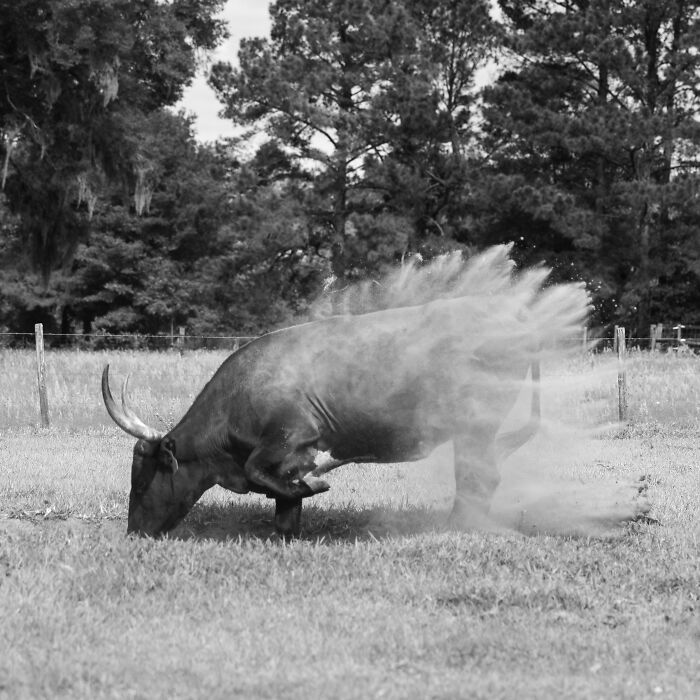
Forty cows were found starving in a field with no grass, surrounded by the bodies of their dead friends. A few, like Nova, still distrust humans.
Maple & Grayson (Jersey)
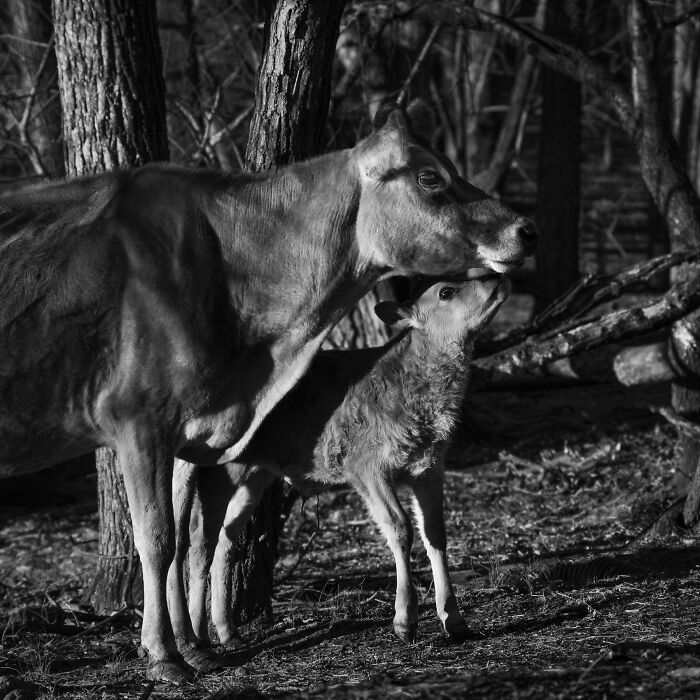
After seven years as a dairy cow, Maple was considered “spent.” Shortly after arriving in the sanctuary, she gave birth to Grayson, her little miracle, named for the rescuer who gave her a second chance.
Photographing the Herd
Before visiting a sanctuary, I read whatever the sanctuary has posted online about individuals in their herd. I try to understand the circumstances of each animal’s rescue and any stories that hint at their personalities. It’s a little like how a portrait photographer researches a human subject to make a connection. I feel like such a fanboy. When I show up at the sanctuary, I’m like, “There’s so-and-so! I read that you like chin scratches. And hey! Over there is such-and-such! I know you’re slow to warm up to strangers, so I’ll give you lots of space.”
I often bend low when meeting a cow for the first time, mimicking their own posture of deference. If they come closer, great! If not, I withdraw and watch from a respectful distance. Some cows only relax in my presence after multiple visits.
I’ve always been drawn to the aesthetic of black and white photography: it reduces a composition to lines, light, texture, and a moment in time. There’s no color to tug at your attention.
My aim always is to show an emotion or give a glimpse of a personality. My photographs just happen to be of cows rather than humans.
Richie & Romeo (Jersey)

Richie and Romeo were taken from a farm where they had been left hungry and neglected. Now they share their days and nights together, best friends.
Richie

Richie explores the acres of grassland and woods available to him before returning to Romeo for caresses before lying down together.
Beyond the Book
“Voices of the Herd” is more than a photography book. It’s part of a broader movement challenging the way society views farmed animals. By presenting rescued cows as individuals with emotions, relationships, and unique personalities, the book aligns with the work of sanctuaries, activists, and advocates striving to create a world where animals are valued for who they are, not for what they can produce.
The book doesn’t confront people with graphic images. It offers a different way of seeing cows—one that helps people connect with them and feel for them. Awareness is often where change begins. When someone realizes that cows feel joy, grief, and love—just like the dogs or cats in their own home—it becomes harder to look the other way.
Whether it inspires someone to reduce their consumption of animal products, visit a farmed animal sanctuary, or advocate for animal rights policy changes, the book contributes to reshaping how we think about animals so often hidden from view.
 Follow Us
Follow Us
